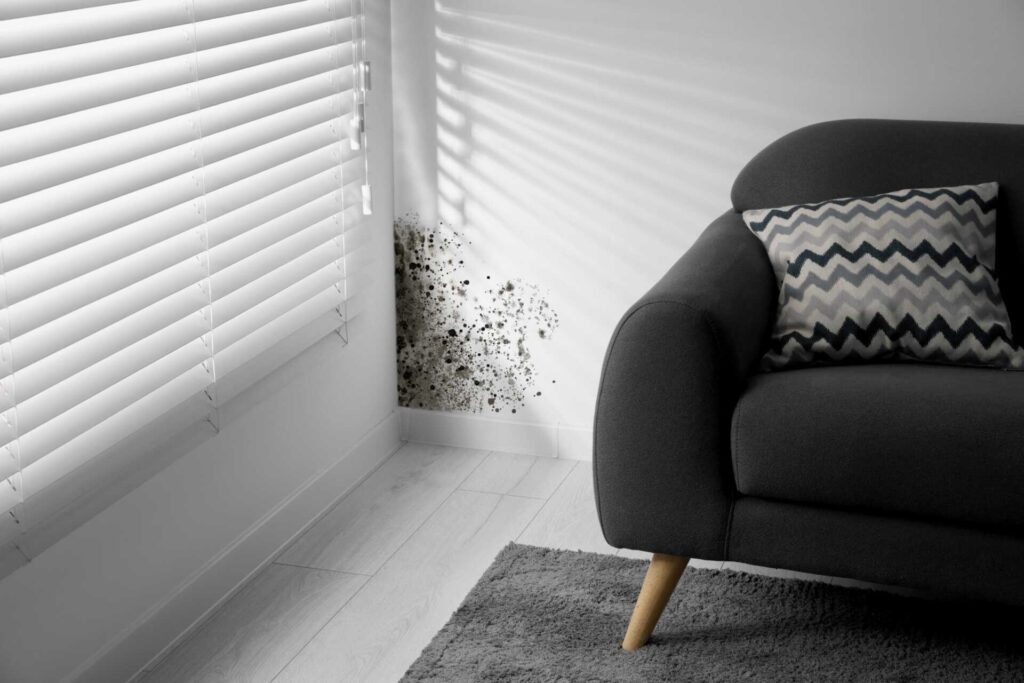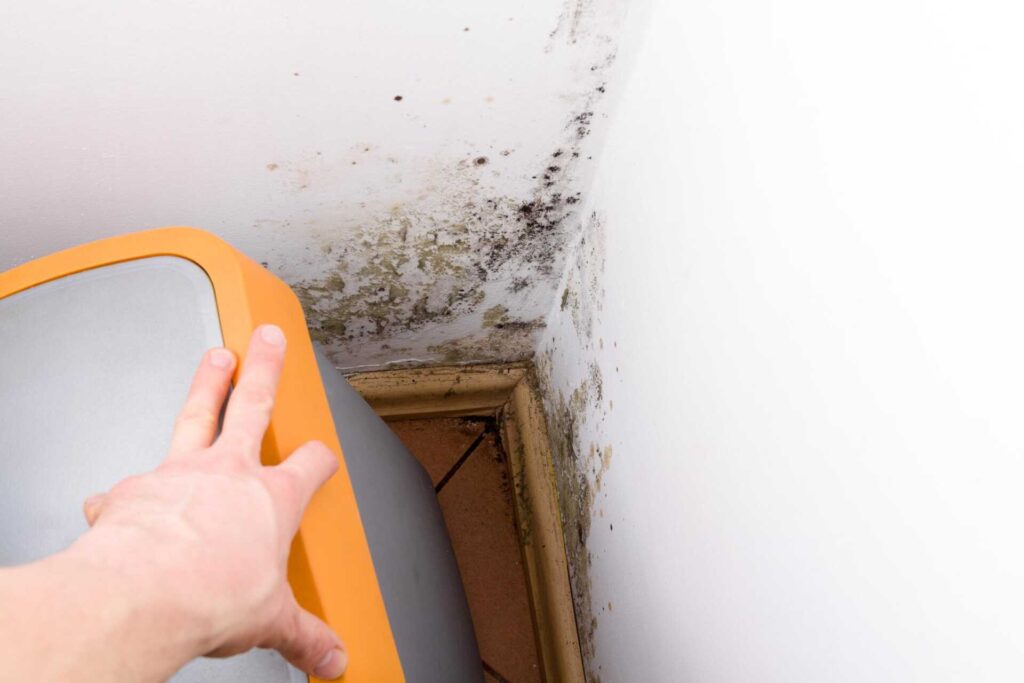Contents
Just as a ship must be swiftly bailed to avoid sinking, your home requires immediate action after water damage to prevent mold growth. It’s essential to understand the steps you need to take to protect your space. From removing standing water to maintaining ideal humidity levels, each action plays an important role in safeguarding your home. Let’s explore these essential tips that can make all the difference in preventing a mold crisis.
Key Takeaways
- Act quickly to remove standing water using pumps or wet vacuums to minimize moisture exposure.
- Thoroughly dry affected areas within 48 hours to prevent mold growth in hidden spaces.
- Use dehumidifiers and fans to lower humidity levels and promote evaporation effectively.
- Inspect and repair damaged materials, replacing any compromised components to eliminate mold breeding grounds.
- Maintain proper ventilation and humidity levels by regularly using exhaust fans and monitoring with a hygrometer.
Act Quickly to Remove Standing Water
When you’ve experienced water damage, acting quickly to remove standing water is vital to preventing mold growth. Standing water creates a perfect environment for mold spores to thrive, so your immediate response can make a significant difference.
Start by identifying the source of the water and shutting it off if necessary. Use pumps or wet vacuums to extract as much water as possible. Make certain to wear protective gear to safeguard yourself from contaminants.
Once you’ve removed the bulk of the water, check for hidden pockets in walls, floors, and ceilings where moisture may linger. Addressing these areas promptly is essential.
Don’t underestimate the importance of swift action; every hour counts in reducing mold risks. Collaborating with professionals can provide you with the expertise needed to ensure no standing water remains.
Together, you can take proactive steps to protect your space and maintain a healthy living environment.
Dry Out Affected Areas Thoroughly
After removing standing water, drying out affected areas thoroughly is the next critical step in preventing mold growth. You need to ensure that every corner of the affected space is adequately dried.
Start by opening windows and doors to promote airflow. Use absorbent materials like towels to soak up excess moisture, focusing on carpets, rugs, and furniture. Pay attention to hidden areas, such as behind walls and under cabinets, where moisture can linger unnoticed.
Don’t underestimate the importance of drying time; aim for a minimum of 48 hours. If you’re unsure, it’s better to err on the side of caution and dry for longer.
Inspect surfaces regularly for dampness, and consider using a moisture meter for accuracy. By taking these steps, you’ll create an environment less conducive to mold growth and foster a healthier living space for yourself and your loved ones.
Use Dehumidifiers and Fans
To effectively combat residual moisture and prevent mold growth, utilizing dehumidifiers and fans is essential. Dehumidifiers work by extracting excess moisture from the air, creating a drier environment that discourages mold spores from settling and thriving.
Place dehumidifiers in the most affected areas, ensuring they run continuously until humidity levels drop considerably.
Fans, on the other hand, promote air circulation, which helps disperse moisture-laden air and accelerates drying. Position fans strategically to direct airflow towards damp surfaces, enhancing evaporation rates.
For best results, combine both tools: while dehumidifiers lower humidity, fans boost airflow, creating a powerful defense against mold.
Monitor humidity levels with a hygrometer, aiming for a range of 30-60%. By taking these proactive steps, you’ll foster a safer, healthier living environment for yourself and your loved ones, keeping mold at bay and ensuring peace of mind.
Inspect and Repair Damaged Materials
Inspecting and repairing damaged materials is essential in preventing mold growth following water damage. Start by evaluating all affected areas, including walls, flooring, and ceilings. Remove any materials that are too compromised, as they’ll only become breeding grounds for mold.
| Material Type | Action Needed |
|---|---|
| Drywall | Replace if saturated |
| Wood | Dry thoroughly; treat if soft |
| Carpeting | Clean or replace |
| Insulation | Remove if wet |
| Furniture | Dry and inspect for damage |
Once you’ve identified the damaged materials, take immediate action to repair or replace them. This helps in mold prevention and restores your space to a safe and welcoming environment. Remember, acting quickly minimizes further damage and promotes a healthier living space for you and your loved ones.
Maintain Proper Ventilation and Humidity Levels
Maintaining proper ventilation and humidity levels is essential in preventing mold growth after water damage, especially since stagnant air can trap moisture in your home.
Start by opening windows and doors when weather permits, allowing fresh air to circulate. Use exhaust fans in kitchens and bathrooms to eliminate excess humidity produced by cooking and showering.
Investing in a dehumidifier can also help regulate indoor humidity levels, ideally keeping them between 30% and 60%. Regularly check your home’s humidity with a hygrometer to ensure it stays within this range.
Additionally, consider using air purifiers with HEPA filters to help capture mold spores and improve indoor air quality.
Remember, mold thrives in damp, poorly ventilated spaces, so making these adjustments will create a healthier living environment for you and your loved ones.
Conclusion
By taking swift action to remove standing water and ensuring thorough drying, you’re not just protecting your home; you’re creating a fortress against the invisible threat of mold. Picture a sunlit room, free from dampness, where fresh air circulates and health thrives. Each step you take—using dehumidifiers, inspecting materials, and maintaining ventilation—paints a vivid picture of safety and comfort. Stay vigilant, and you’ll cultivate a space where mold fears to tread, allowing you to breathe easy once more.

